Made In And COO Labeling: Essential for Clothing Brands
For small clothing businesses, navigating the world of product labeling can feel complex. Understanding terms like “made in” and ensuring accurate country of origin labeling (COO) isn’t just about compliance; it’s fundamental to building trust and a solid brand reputation. Getting these labels wrong can lead to significant legal and operational challenges, including enforcement actions from the FTC, customs delays, and damage to your brand’s credibility.
Conversely, accurate labeling builds consumer trust and enhances your brand’s standing in the competitive market. This guide aims to cut through the confusion, offering clear insights into the requirements, the distinctions between various origin claims, and the practical steps needed to label your apparel correctly, helping you avoid common pitfalls and leverage labeling as a valuable business asset.
1. What does “country of origin” mean for your products?
1.1. The basic concept: identifying where a product is made
At its core, the country of origin (COO) simply refers to the nation where a product was manufactured, produced, or grown. This designation serves a fundamental purpose in international trade, acting as a standard identifier for the product origin or source, allowing countries to track the flow of goods across borders and apply relevant trade rules and duties based on the manufacturing location.
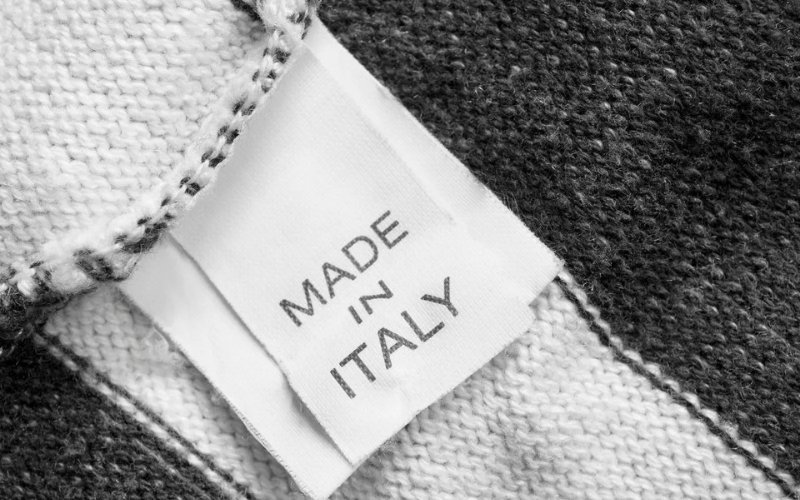
1.2. Why it’s legally required for textiles and apparel in the US
For businesses importing textiles and apparel into the United States, country of origin labeling isn’t optional; US law mandates it. Specific regulations, chiefly the Textile Fiber Products Identification Act and the Wool Products Labeling Act, require these products to clearly state their origin.
The primary goals behind these textile labeling laws are to provide consumers with essential information about where their garments come from and to enable effective regulatory oversight by government agencies. This mandatory origin labeling ensures a baseline level of transparency in the apparel market.
1.3. The role of U.S. Customs and Border Protection (CBP) vs. FTC
Understanding origin labeling requires recognizing the distinct roles of two key US agencies: U.S. Customs and Border Protection (CBP) and the Federal Trade Commission (FTC).
- CBP: Think of CBP as the gatekeeper at the border. Its main focus regarding origin is determining the correct country of origin for imported goods to assess appropriate import duties and tariffs and ensure compliance with mandatory labeling requirements. CBP uses specific “rules of origin,” often centered on the concept of “substantial transformation” (where a product undergoes a fundamental change in character, name, or use), to make these determinations.
- FTC: The FTC, on the other hand, acts more like a market regulator concerned with fair practices after goods are in the country, or for goods produced domestically. Its primary jurisdiction involves voluntary U.S. origin claims, such as the widely recognized “Made in USA” label. The FTC’s goal is to prevent deceptive or misleading claims about U.S. origin in marketing and labeling, ensuring consumers are not misled about where a product is truly made.
While both deal with origin, CBP enforces mandatory labeling at import based on manufacturing processes, whereas the FTC polices the accuracy of voluntary marketing claims about U.S. origin.
2. Decoding the “Made in USA” standard: the FTC’s perspective
2.1. The FTC’s strict “all or virtually all” rule explained
When considering an unqualified “Made in USA” claim on your apparel, understanding the Federal Trade Commission’s (FTC) standard is paramount. According to FTC regulations, for a product to be marketed with this label, “all or virtually all” of its significant parts and processing must originate from the United States.
This is a notably strict requirement for domestic production. The term “United States” encompasses the 50 states, the District of Columbia, and U.S. territories and possessions. Adhering to this “all or virtually all” benchmark is essential for truthful “Made in USA” labeling.
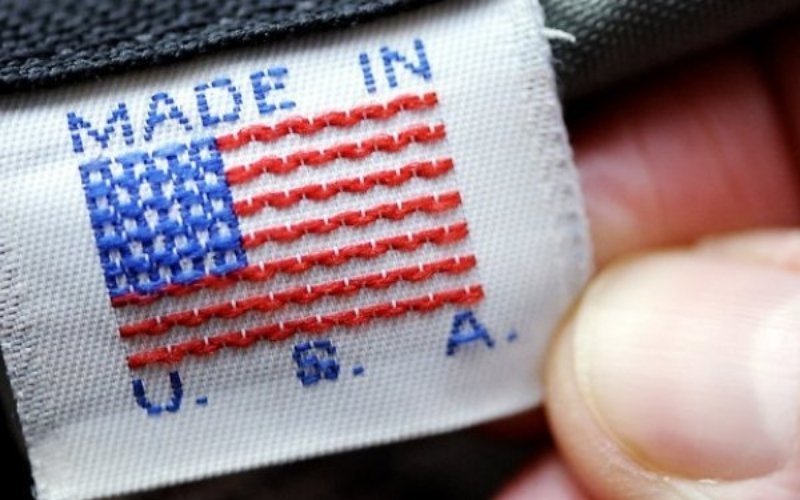
2.2. What qualifies as “significant parts and processing” in apparel?
Determining what constitutes “significant parts and processing” is crucial for applying the “all or virtually all” rule to apparel. Significance isn’t based on a fixed percentage but relates to the components and steps essential to the garment’s character and creation.
For clothing, significant processing typically includes the core manufacturing processes like fabric formation (such as knitting or weaving), the cutting of the fabric panels, and the sewing or assembly of the garment. Dyeing and finishing processes can also be considered significant.
Minor components, like certain types of thread or basic buttons, might sometimes be deemed non-significant if they constitute a negligible part of the overall product cost and material, but context is always key. The primary fabric, however, is almost invariably considered a significant part.
2.3. The critical importance of final assembly location in the US
A non-negotiable requirement for any unqualified “Made in USA” claim is that the product’s final, substantial assembly must take place within the United States. For apparel, this typically means the primary sewing operations that bring the cut fabric pieces together into a finished garment must occur at a US manufacturing location.
Even if all materials are domestically sourced, if the final garment assembly happens outside the US, the product generally does not qualify for the “Made in USA” label under FTC guidelines. This US-based final assembly is a baseline criterion.
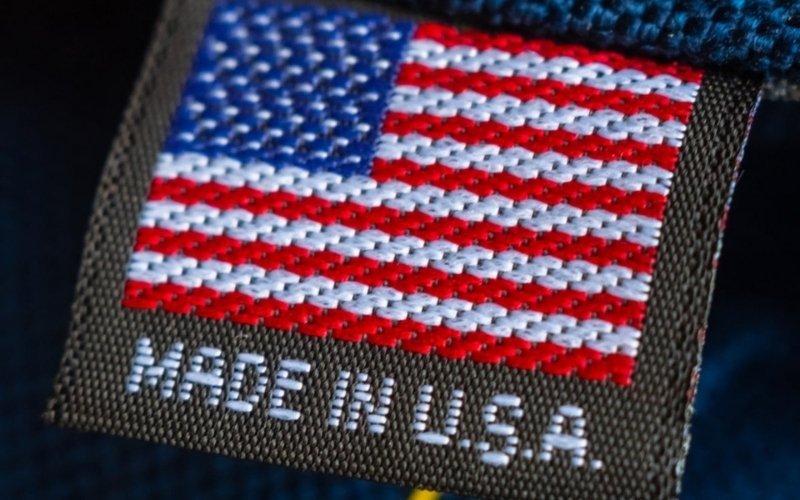
2.4. Understanding “negligible foreign content”
While the “all or virtually all” standard is stringent, the FTC does allow for a minimal amount of negligible foreign content. This means that even if a product contains foreign components, it might still qualify for a “Made in USA” claim if those foreign elements are not significant to the product’s final form, function, or overall cost.
The foreign content must be truly inconsequential. For example, if a specific type of specialized thread needed for a particular seam wasn’t available from a US source and represented a tiny fraction of the garment’s total material cost, it might be considered negligible foreign content.
However, this allowance is narrow and should be approached cautiously; relying on significant foreign components rules out an unqualified “Made in USA” claim.
3. “Made in USA” vs. “Assembled in USA”: a crucial distinction for apparel
3.1. Defining “assembled in USA”: when does it apply?
The label “Assembled in USA” is used when a product’s final and most significant assembly occurs within the United States, and this assembly process is considered substantial. This claim typically applies when key components of the product are sourced from foreign countries (imported components), but the actual process of putting these parts together to create the final item happens domestically.
The key is that the principal assembly, the process that gives the product its essential character, takes place in the US. This differs from the “Made in USA” standard, which requires nearly all components and processing to be domestic.
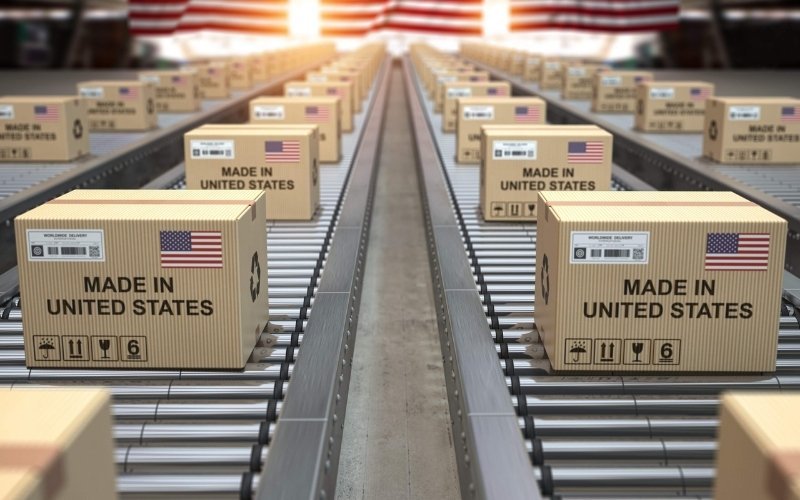
3.2. Explaining “substantial transformation” for clothing and textiles
The concept of “substantial transformation” is central to understanding both country of origin determination for imports (as used by CBP) and the validity of an “Assembled in USA” claim. For clothing and textiles, substantial transformation generally refers to manufacturing processes that fundamentally change the name, character, or use of the input materials to create a new and different article.
In the context of apparel, transforming raw materials like fabric, thread, buttons, and zippers into a finished garment through processes like cutting and sewing is almost always considered a substantial transformation. For instance, taking imported fabric, cutting it according to a pattern, and then sewing it into a dress within the US constitutes substantial transformation.
Conversely, minor operations like simply attaching a label, performing final quality checks, or packaging a pre-assembled garment typically do not meet the substantial transformation threshold. This concept is vital because an “Assembled in USA” claim relies on this final, character-changing transformation occurring domestically.
3.3. Using qualified claims correctly (e.g., “Assembled in USA from imported fabrics,” “Made in USA of US and imported materials”)
When an apparel product doesn’t meet the strict “all or virtually all” standard for an unqualified “Made in USA” claim but still involves significant US-based manufacturing or assembly, qualified claims become necessary.
These labels provide consumers with more specific information about the product’s origin, ensuring clarity and preventing deception. The key is to accurately describe the extent of the US content or processing.
Common examples relevant to clothing businesses include:
- “Assembled in USA from imported fabrics”: This clearly indicates that while the final sewing and assembly happened domestically, the main material (fabric) originated elsewhere.
- “Made in USA of US and imported components”: This suggests a mix of domestic and foreign parts were used, even if final assembly was in the US. The significance of the imported components prevents an unqualified “Made in USA” claim.
- “Sewn in USA with foreign materials”: Similar to the first example, this highlights the specific US process (sewing) while acknowledging the origin of the materials.
Using such qualified claim specifications accurately is crucial. The goal is always transparency – providing truthful information that allows consumers to understand the origin profile of the garment without being misled.
4. Why accurate labeling is non-negotiable for your apparel brand
4.1. Staying compliant: avoiding costly FTC actions and customs hold-ups
Inaccurate “made in” or country of origin labeling carries significant risks for apparel businesses. Failure to comply with regulations can lead to serious consequences. The Federal Trade Commission (FTC) actively pursues enforcement actions against companies making deceptive origin claims, which can result in hefty fines, mandated corrective advertising campaigns to rectify misinformation, and potentially damaging lawsuits.
High-profile companies have faced multi-million dollar penalties for misleading “Made in USA” claims, serving as a stark reminder of the financial implications. Furthermore, incorrect labeling can cause major disruptions at the border. U.S. Customs and Border Protection (CBP) may delay, detain, or even refuse entry to shipments with improper COO markings, leading to stock shortages, broken delivery promises, and added logistical costs. Ensuring legal compliance from the outset is crucial to avoid these costly setbacks and maintain smooth operations.
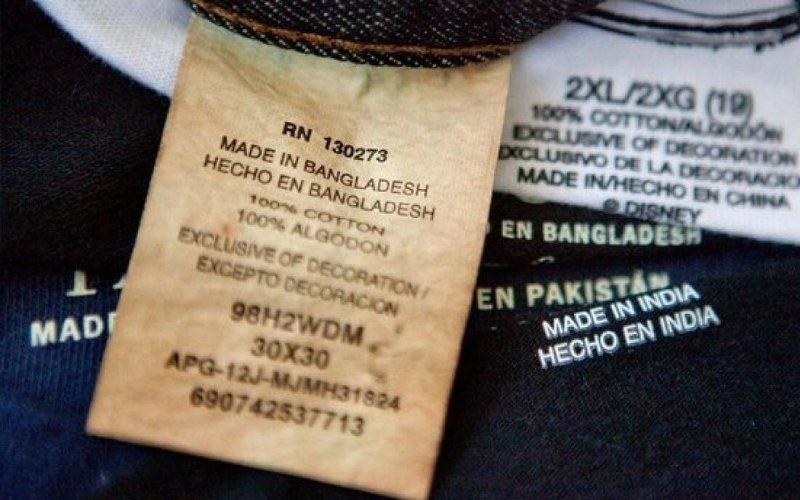
4.2. Building trust: transparency as a cornerstone of brand loyalty
Beyond avoiding penalties, accurate labeling presents a positive opportunity to strengthen your brand. In today’s market, consumers increasingly value brand transparency and honesty. Clearly and truthfully stating where your garments are made – whether domestically or abroad, using unqualified or qualified claims as appropriate – demonstrates integrity.
This openness builds credibility and fosters consumer trust, which are cornerstones of long-term brand loyalty. When customers feel confident that a brand is upfront about its practices, including sourcing and manufacturing locations shown through accurate labeling, they are more likely to develop a lasting relationship and advocate for the brand. Embracing transparency in labeling aligns with building a reputable and respected brand identity.
4.3. The marketing edge: how origin labels influence consumer perception and purchasing decisions
Origin labels can be more than just a legal requirement; they can function as a potent marketing tool influencing consumer perception and purchasing decisions. A “Made in USA” label, when used correctly, often taps into consumer patriotism, perceptions of higher quality standards, or concerns about ethical labor practices. For certain target audiences, this label carries significant weight and can be a deciding factor in a purchase.
Even accurately stated qualified claims (like “Assembled in USA from imported fabrics”) can provide a marketing advantage by highlighting domestic assembly or specific US processes, appealing to consumers who value partial domestic contribution or simply appreciate the transparency. Understanding your specific customer base is key to leveraging the marketing significance of origin labeling effectively, as its impact varies across different consumer segments.
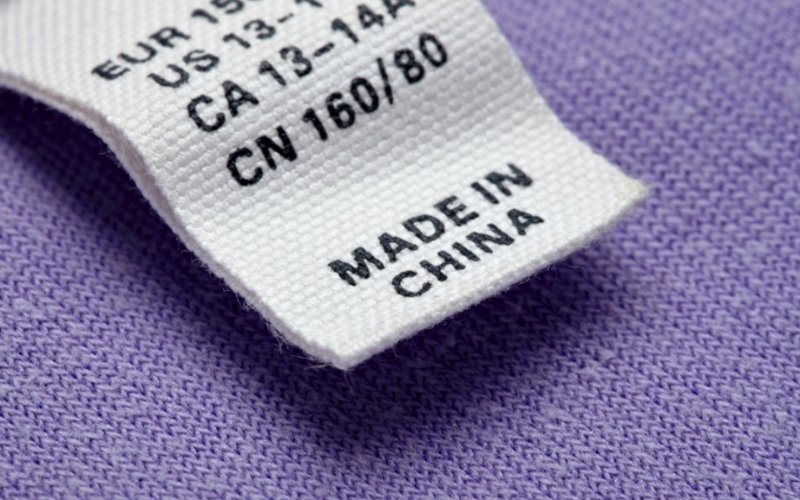
4.4. Supporting the domestic production narrative (linking to US economy)
For brands utilizing domestic manufacturing or assembly, accurate “Made in USA” or “Assembled in USA” labeling connects your products to a broader narrative about supporting the domestic production landscape. Choosing to manufacture or assemble apparel within the United States contributes directly to the US economy and supports job creation.
Highlighting this through proper labeling allows brands to resonate with consumers who prioritize buying American-made goods, sometimes influenced by initiatives related to the Buy American Act or a general desire to support local industries. This connection can strengthen brand affinity among specific consumer groups who value domestic economic contribution.
5. Practical steps: determining your clothing’s correct origin label
5.1. Mapping your supply chain: tracking components, production sites, and manufacturing processes
Accurately determining your product’s origin begins with a thorough understanding of your supply chain. Achieving supply chain transparency requires meticulous tracking and documentation. Businesses should systematically map out:
- Component origins: Identify the source country for every significant component used in your garments. This includes the main fabric, linings, major trims, zippers, buttons, and even specialized threads if they represent a notable part of the product.
- Production site locations: Pinpoint the exact location (country) where each key manufacturing process takes place. This covers steps like fabric weaving or knitting, dyeing, printing, cutting the fabric panels, the primary sewing or assembly, and any significant finishing processes.
- Manufacturing processes: Document the specific steps involved in creating the garment at each production site. Understanding the sequence and nature of these processes is vital for determining where substantial transformation occurs.
Maintaining detailed sourcing documentation from your suppliers is critical. Request and retain records that clearly state the origin of materials and confirm where specific production steps were performed. Robust record keeping forms the foundation for any origin claim.
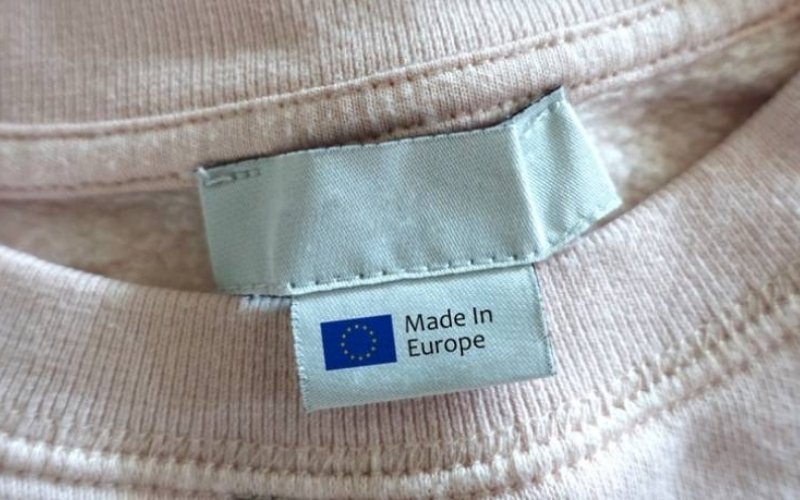
5.2. Assessing costs: analyzing US vs. foreign contributions
For businesses considering a “Made in USA” claim, analyzing the cost breakdown between U.S. and foreign contributions is a necessary step in the FTC’s “all or virtually all” assessment. This involves comparing the percentage of the total manufacturing costs attributable to U.S. parts and processing versus those attributable to foreign sources. This cost analysis should generally include:
- Cost of materials (fabric, components) sourced from the US vs. foreign countries.
- Direct labor costs incurred in the US vs. foreign countries for processes like cutting and sewing.
- Relevant factory overhead costs associated with US vs. foreign production activities.
Performing this manufacturing cost analysis accurately can be complex, often requiring detailed accounting information. However, understanding the relative cost contribution is part of substantiating that “virtually all” processing and components are indeed of U.S. origin according to the FTC analysis framework.
5.3. Record keeping: documentation needed to substantiate your claim
Making an origin claim, especially “Made in USA,” requires more than just belief; it demands proof. The FTC mandates that businesses must possess and rely upon competent and reliable evidence before making such a claim. Effective record keeping is non-negotiable. Key documentation needed to substantiate your claim includes:
- Supplier declarations/certifications: Formal COO certifications or letters from your suppliers specifying the origin country of fabrics and components.
- Purchase orders and invoices: Records that clearly show where materials were purchased from and specify their origin.
- Factory production records: Documentation from the manufacturing facility detailing the processes performed (e.g., cutting logs, sewing line records) and confirming the location where these occurred.
- Bill of materials (BOM): Detailed lists specifying each component, its source/origin, and potentially its cost.
- Cost analysis worksheets: Internal documents showing the breakdown of US vs. foreign manufacturing costs, used to support an “all or virtually all” assessment.
Having this sourcing documentation readily available allows you to confidently back up your label claims if questioned by regulators or consumers.
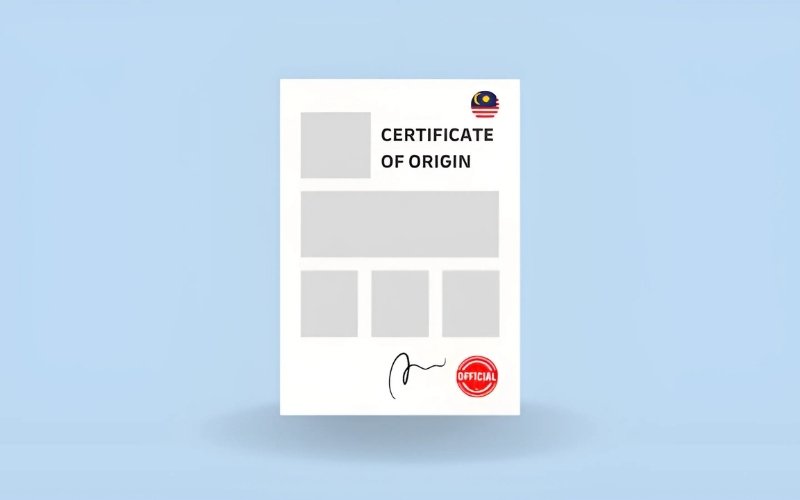
5.4. When complexities arise: seeking guidance from legal or trade experts
Navigating country of origin rules can become particularly challenging with complex supply chains involving multiple countries, intricate manufacturing processes, or nuanced cost analyses. If you encounter situations where determining the correct origin or applying the FTC or CBP rules feels uncertain – perhaps regarding substantial transformation criteria or the specifics of the “all or virtually all” standard – seeking expert advice is a prudent course of action.
Consulting with legal guidance from lawyers specializing in FTC advertising law or Customs regulations, or seeking assistance from experienced trade consultants, can provide clarity. These professionals can help interpret regulations specific to your situation, assess your evidence, and guide you toward compliant labeling, mitigating significant legal and financial risks associated with complex supply chain scenarios. View seeking expert advice not as a failure, but as a strategic investment in compliance.
6. Related questions
6.1. Can I use “Designed in USA” if the garment is manufactured elsewhere?
Yes, using a “Designed in USA” label is generally permissible even if the actual manufacturing occurs in another country. However, this claim must be truthful and carefully worded to avoid being misleading under FTC rules. The phrase “Designed in USA” strictly refers to the location where the creative or engineering aspects of the product’s development took place; it does not imply anything about where the item was physically produced.
To ensure transparency and compliance, it is highly advisable to pair this claim explicitly with the actual country of manufacture. For example, a label stating “Designed in USA, Made in Vietnam” clearly communicates both aspects of the product’s journey. Failing to disclose the foreign manufacturing origin alongside a prominent “Designed in USA” claim could potentially deceive consumers into believing the product is domestically made, violating FTC regulations against misleading claims.
6.2. What specific records should I maintain to back up a “Made in USA” claim?
To confidently substantiate a “Made in USA” claim and meet FTC expectations for reliable evidence, maintaining thorough documentation is essential. Key records you should keep include:
- Detailed bill of materials (BOM): Listing all components and materials used, clearly indicating the verified country of origin for each.
- Purchase orders and supplier invoices: Documents confirming the purchase of materials and components from U.S. sources.
- Factory production records: Logs and documentation from the U.S. manufacturing facility detailing the production steps performed domestically (e.g., cutting records, sewing line reports, finishing processes).
- Labor cost documentation: Records supporting the allocation of labor costs associated with U.S. production activities.
- Manufacturing cost analysis: A worksheet or detailed breakdown demonstrating how the total manufacturing cost is allocated between U.S. parts/processing and any foreign content, supporting the “all or virtually all” assessment.
Remember, you need sufficient proof covering all significant parts and processes involved in making the garment to robustly back up an unqualified “Made in USA” claim.
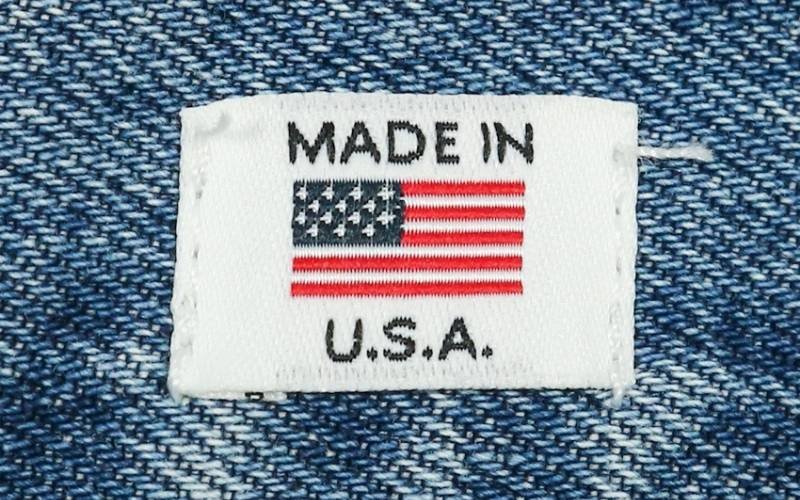
6.3. How does the declared country of origin impact import duties and tariffs?
The country of origin (COO) declared to U.S. Customs and Border Protection (CBP) upon import directly determines the applicable import duties and tariff rates for your apparel products. Different countries face varying tariff schedules for the same types of goods entering the US. Furthermore, the COO determines eligibility for preferential duty rates under various free trade agreements, such as the United States-Mexico-Canada Agreement (USMCA).
An incorrect COO declaration can lead to significant financial consequences. If the declared origin results in underpayment of duties, CBP can issue demands for back-payments plus penalties. Conversely, overpaying duties due to an incorrect declaration can negatively impact your profit margins. Accurate COO determination and declaration are therefore crucial for correct duty assessment and smooth customs clearance.
6.4. Do the labeling rules differ significantly for accessories compared to core clothing items?
Generally, the fundamental principles governing origin labeling apply similarly to accessories (like belts, scarves, hats, bags) as they do to core clothing items. The FTC’s strict “all or virtually all” standard must be met for an unqualified “Made in USA” claim on an accessory. Likewise, imported accessories typically require a COO marking under CBP regulations, just like imported apparel.
Where differences might arise is in the specific application of these principles. For instance, determining what constitutes a “significant part” or where “substantial transformation” occurs might involve different components and processes for a leather belt compared to a cotton t-shirt. The essential nature of the accessory dictates which parts and processes are key to its identity. However, the core legal requirements for truthful and non-deceptive labeling remain consistent across product types within the textile and apparel family.
6.5. What are the typical consequences if the FTC determines my “Made in USA” label is misleading?
If the Federal Trade Commission (FTC) investigates and determines that your “Made in USA” label is misleading or unsubstantiated, the consequences can be severe and costly for your business. Typical FTC enforcement actions include:
- Cease and desist orders: Legally binding orders requiring your company to stop making the deceptive claim immediately.
- Monetary penalties/fines: Significant financial penalties, potentially reaching millions of dollars, as demonstrated by past enforcement actions.
- Corrective advertising: Requirements to fund and run advertising campaigns specifically designed to correct the misinformation previously conveyed to consumers.
- Compliance monitoring: Mandates for ongoing monitoring programs to ensure future adherence to labeling regulations, often involving reporting requirements to the FTC.
- Damage to brand reputation: Beyond legal and financial penalties, an FTC finding of deceptive practices can severely harm consumer trust and your brand’s image in the marketplace.
Read more:
Ultimately, navigating the nuances of “made in” and country of origin labeling is fundamental for any apparel business aiming for long-term success. A diligent understanding and correct application of these rules are not just about meeting legal requirements; they are essential pillars supporting compliance, consumer trust, and overall brand value.
Knowing the critical distinctions between claims like “Made in USA” and “Assembled in USA,” coupled with rigorous supply chain verification, empowers you to label your products accurately. Prioritizing accurate labeling protects your business from costly penalties and builds a reputation for transparency and integrity.
Making this accuracy a core part of your operations allows you to present your brand with confidence in the competitive marketplace.






















